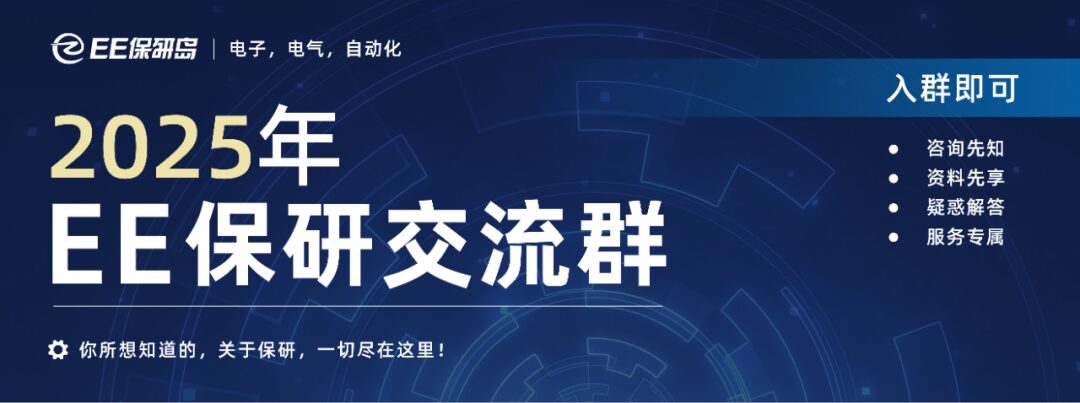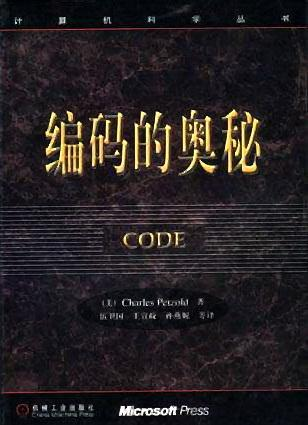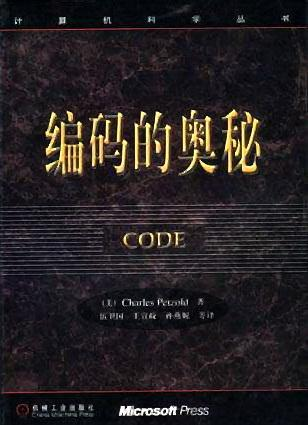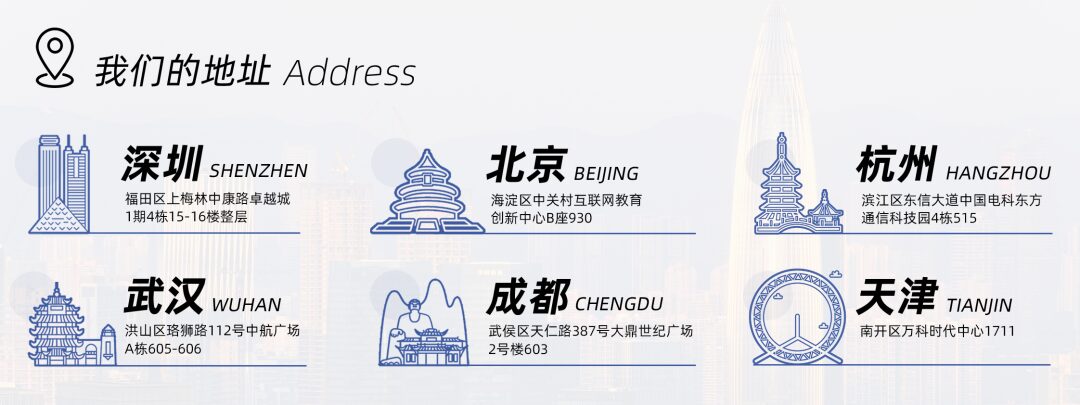
“
Refine course essence, build knowledge system, overcome professional difficulties, Learning is not NG~ Hello everyone, this is a new column on the Electronic and Electrical Automation Graduate School Island——Learning is not NG. Here, the island owner will share learning experiences of electronic and electrical automation courses, including difficult points explanation, learning method summary, final review strategies.
Of course, if you have better learning methods or superior study strategies, feel free to leave your insights in the comments!!!
Today’s specialized course is——Microcomputer Principles and Interface Technology.
01
Course Introduction
“Microcomputer Principles and Interface Technology” is one of the core courses in the automation major. This course mainly explains the fundamental principles of microcomputers and how to design interfaces with external devices.
For students who wish to research hardware design, system integration, etc., it is crucial to build a solid foundation in this course!
Learning Content
The course content includes computer hardware structure, data processing, control methods, and technologies for data exchange with external devices. It covers the following aspects:
1. Basic knowledge of microcomputers
2. Structure and working modes of microprocessors
3. Addressing methods and instruction systems of 8086
4. Assembly language programming
5. Memory
6. I/O interfaces and parallel interface chip 8255A
7. Programmable counter/timer 8253/8254
8. Interrupts and programmable interrupt controller 8259A
9. Serial communication and programmable interface chip 8251A
10. Analog-to-digital (A/D) and digital-to-analog (D/A) conversion
11. DMA controller 8237A
12. Bus technology
Course Difficulty
Microcomputer Principles and Interface Technology is a highly practical course. The difficulty mainly lies in two aspects: first, the understanding of hardware principles, which may be quite abstract for students without a hardware background; secondly, the programming implementation of interface technology, which involves hardware registers, peripheral control, etc., requiring a certain foundation in programming and electronics.
The course content may seem very hardcore, but once you understand the principles, the actual operation can be very enjoyable.
02
Book Recommendations

Microcomputer Principles
and Interface Technology
University of Science and Technology of China Press
Edited by Zhou Heqin and Feng Huanqing
Recommendation Reason:This book explains in detail the basic structure of microcomputers and various interface implementation methods, emphasizing fundamental theoretical knowledge, suitable for beginners’ theoretical study. The downside is that there are too few examples in the book, making it difficult to deeply learn the course just by reading.

The Secrets of Coding
Mechanical Industry Press Charles
Petzold Editor
Translated by Wu Weiguo, Wang Xuanzheng, etc.
Recommendation Reason:This book is quite well-known and indeed good. It integrates digital and analog electronics, assembly, circuit principles into one great book!! Although this book seems to be over 200 pages, it really integrates too many professional knowledge points. It is recommended that everyone buy a copy to read, but the truth table section in the first few chapters can be a bit difficult to understand.
03
Difficult Points and Learning Methods
Microcomputer
Hardware Structure
Difficult Points
Understanding and applying convolution operation to analyze linear time-invariant systems (LTI systems) is the core of the course. Convolution is the main tool for calculating system output, but for beginners, performing continuous time and discrete time convolution calculations can be quite challenging, especially when dealing with more complex signal combinations.
Learning Methods
Look at more diagrams of computer hardware structure. Diagrams can help you clearly see how various modules are connected together. For example, how CPU, memory, I/O ports are connected and transmit data through the bus.
You can also conduct small experiments to deepen your understanding of these modules, not only to understand how they work but also to understand how their functions cooperate.
Interrupt Mechanism
and DMA
Difficult Points
Understanding the working principles of the interrupt mechanism and DMA (Direct Memory Access) is quite abstract in computer systems. Understanding the priority and processing flow of interrupts, especially how to allow the CPU to reasonably process interrupt tasks, will give you a deeper understanding of the computer’s workflow.
Learning Methods
You can conduct some simple experiments to feel how interrupts work. For example, you can do a simple interrupt experiment where pressing a button triggers an interrupt request and observe how the CPU responds.
For DMA, you can simulate data transmission between memory and peripherals, observing how DMA bypasses the CPU for direct data exchange. This will help you understand how it improves efficiency.
Assembly Language
and Hardware Programming
Difficult Points
Assembly language seems very “hardcore” because it is very close to machine language and has a concise syntax, but it can also be very confusing. Moreover, it is closely related to hardware operations, so once an error occurs, debugging can be difficult. The way assembly language controls hardware is not as intuitive as high-level programming languages; you need a certain understanding of the underlying details of hardware to write appropriate code.
Learning Methods
Don’t rush to write complex code right away; start learning with simple instructions. Master the basic instructions, syntax, and working principles of assembly, such as how to control the CPU for data reading and writing, how to access memory, etc. These are the foundations of your learning in hardware programming.
Debugging tools are crucial in this part of learning. You can use debugging tools to view the execution process of the program in real-time, analyzing the impact of each instruction on the hardware during execution.
Peripheral
Interface Programming
Difficult Points
Writing communication programs with peripherals is one of the most challenging parts of computer hardware programming. For example, how to configure serial ports, parallel ports, USB, etc., to exchange data with external devices (such as displays, printers, keyboards, etc.) is a task that requires precise control. This part involves many hardware characteristics and programming techniques, making it difficult to master when starting to learn.
Learning Methods
You can start with serial port programming; each peripheral’s interface type, transmission method, and control signals are different, so you need to understand the specific requirements of each peripheral and how to communicate with the device via the serial port. Then learn how to use parallel ports, USB, etc. The best learning method is through experimentation, writing code to interact with peripherals.
You can choose some common peripherals (such as keyboards, displays, etc.) and write simple programs to implement their input and output functions.
04
Learning Method Summary
Consolidate the foundation, focus on understanding principles
Understand the basic principles of each hardware module. Remember, understanding principles is more important than rote memorization of formulas! Look at diagrams, animations, and simulation tools to help you build a “computer model” in your brain.
You can understand complex principles through simple examples, such as first learning how to operate memory before understanding more complex bus transmission principles. This way, you can gradually break down complex knowledge points.
Practice hands-on, reinforce theory
This course is a highly practical course, especially in learning hardware programming and peripheral interface programming; theoretical discussions alone are not enough, and you must deepen your understanding through experiments. The best way to learn assembly language and control hardware is to write code and debug in real-time to see how it actually runs. Hands-on experiments not only help clarify theory but also allow you to encounter problems during practical operation, leading to a deeper understanding of knowledge points.
Practice more problems, accumulate experience
Exercises are the best way to consolidate learning, especially in learning assembly language and interface programming, doing exercises can help you master programming skills faster. You can start with some simple hardware control programs and gradually learn how to control peripherals and manipulate registers through assembly.
As your understanding of assembly language deepens, you will become increasingly adept at communicating with different types of peripherals, understanding their data transmission methods and control signals.
05
Final Review Strategy
01
Assessment Method: Exam
02
Key Points or Question Types
In the final exam of the course “Microcomputer Principles and Interface Technology,” the key points mainly revolve around the principles of computer hardware, assembly language programming, interrupt and DMA technology, and peripheral interface applications.
The exam question types are quite diverse; in addition to common short answer questions and programming questions, there may also be some calculation problems and comprehensive application questions. To review efficiently, it is recommended that everyone combine textbooks and experiments, do some past exam questions and mock tests to familiarize themselves with question types and content, and enhance exam confidence!
03
Review Methods
The course “Microcomputer Principles and Interface Technology” covers many knowledge points, both theoretical principles and programming and hardware operations, so during review, it is important to focus on the combination of understanding and practice.
First, understand the basic principles of each hardware module. Hands-on experiments are key to consolidating theory, especially in assembly language programming and peripheral interface programming, through practical operations, you will more intuitively experience the interaction process between hardware and software.
Moreover, through repeated practice, you can identify your weak areas and strengthen them, improving problem-solving speed and accuracy. Most importantly, this course has a lot of content, so when reviewing, plan your time reasonably to ensure that you cover the core concepts of each knowledge module, repeatedly solve problems, summarize mistakes, and correct them, and then consolidate through practical operations, you will be able to firmly grasp the key knowledge of the course and perform well in the final exam.
Believe that as long as you put in enough effort, you will successfully pass the final exam of this course!
✦
•
✦
Recommended Materials
Reply 【Electronic and Electrical Automation Graduate School Group】

Join the group to enjoy more services
Senior students will answer your questions online
Get first-hand information, and access a wealth of free materials!
Click the card below
Follow 【Electronic and Electrical Automation Graduate School Island】
To get more graduate school information~
↓↓↓
General Materials
Graduate School Blue Book | Graduate School Calendar Physical Version |
200 Questions for Graduate School | Graduate School Rumors 100 Questions |
Graduate School Bonus Handbook | Graduate School Positioning Strategy Handbook | Graduate School Summer Camp Handbook |
Transfer Major Handbook |
Professional Materials
Automation——Graduate School Handbook | Review Material Package | Written and Interview Real Questions |
Value Gap | Pre-recommendation TOP Institutions | Employment Handbook | Interview Guide |
Electrical Engineering——Graduate School Handbook | Review Material Package | Written and Interview Real Questions |
Pre-recommendation TOP Institutions | Oral Handbook | Interview Guide |
Electronic Information——Graduate School Handbook | Written and Interview Real Questions |
Pre-recommendation TOP Institutions |
Integrated Circuits——Graduate School Handbook | Review Material Package | Written and Interview Real Questions |
Electronic Science and Technology——Review Material Package |
Communication Engineering——Review Material Package | Written and Interview Real Questions |
Pre-recommendation TOP Institutions |
Artificial Intelligence——Review Material Package | Written and Interview Real Questions |
Pre-recommendation TOP Institutions |
Document Materials
Document Templates | Application Form Filling Manual |
Resume Manual | Resume Writing Example |
Personal Statement Manual | Personal Statement Writing Example |
Recommendation Letter Manual | Contacting Tutors | Self-introduction PPT |
Information Materials
23 Years EE:Institution Background Requirements Table | English Requirements Summary Table |
Excellent Policy Table | Application Restrictions Table | Detailed Requirements Table |
Online Assessment Key Points Table |
24 Years EE:English Requirements Summary Table |
Summary Table of 216 Strong and Weak CS&EE Institutions |
23 Years Nine Recommendations Leak Table | 24 Years Nine Recommendations Leak Table |
Pre-recommendation Inventory Table | Pre-recommendation Assessment Key Points |
Competition Materials
Innovation and Entrepreneurship Application Handbook |
English Application Handbook |
Foreign Language Teaching and Research Press National Talent Cup Competition Handbook |
Internet Handbook |
American Mathematical Competition Handbook | American Mathematical Competition 62 Questions |
National College Student Electronic Design Competition Preparation Material Package |
Datang Cup Information Technology Competition Preparation Material Package |
National College Student Intelligent Car Competition Preparation Material Package |
National College Student Energy Conservation and Emission Reduction Competition Preparation Material Package |
“Siemens Cup” China Intelligent Manufacturing Challenge Preparation Material Package |
Huawei ICT Competition Preparation Material Package |
China Electric Power Statistical Yearbook |
Professional Course Review Material Package
Circuit | Digital Electronic Technology Basics | Analog Electronic Technology Basics |
Signals and Systems |

